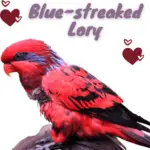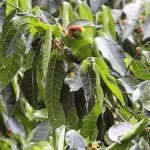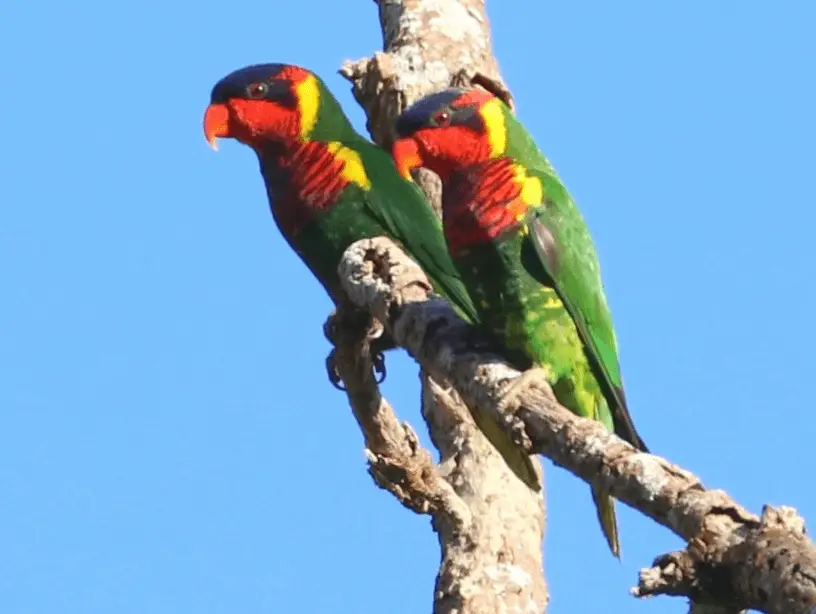Ornate Lorikeet 25 cm. Bill orange-red; crown and ear-coverts purplish-black; face and postocular stripe red; side of neck yellow; throat and breast red broadly barred deep blue; belly green with some yellow edges,
Systematics History
Closely related to the T. haematodus complex. Monotypic.
Subspecies
Monotypic.
Distribution
Sulawesi and adjacent offshore islands (Togian Is, Bangai Is, Muna, Butung, Kaledupa). Also recorded on Sangihe I and Talaud Are (possibly escapes).
Habitat
Peat and freshwater swamp forest, woodland, secondary forest and forest edge, bush, and near cultivation including coconut plantations, from sea-level to 1000 m in N & C Sulawesi, to 1500 m in S.
Diet and Foraging
May concentrate in large numbers to feed in flowering trees; Tectona and Casuarina seeds reported.

Sounds and Vocal Behavior
In-flight, a rather mellow screech, “krwee!” or “hrweet!”. When perched also utters short nasal notes and several variants of the just-described screeches.
Breeding
Breeding-condition birds, Sept-Oct. In captivity: two eggs, size 23·7–27·5 mm × 21·5–21·9 mm (Harrison and Holyoak 1970); incubation 27 days; nestling period 80 days.
Loki the Ornate Lorikeet – ‘Dau’
SOURCE: jachusky
Conservation Status
Not globally threatened. CITES II. Reported to be particularly common in coconut plantations and around villages in some parts; common in Dumoga-Bone National Park.





















